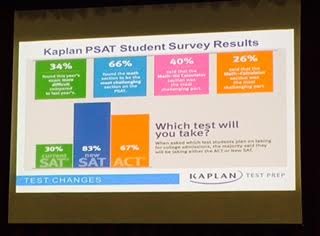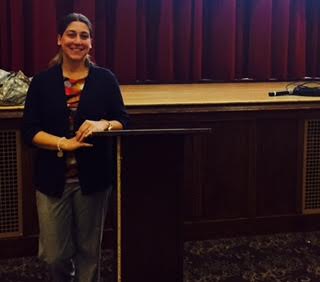Counselors host PSAT interpretation night

Photo Credit: Mia Ramdayal
Photo Credit: Mia Ramdayal Based on the Kaplan PSAT survey results, 66% of students found the maths section to be the most challenging section on the new PSAT.
January 19, 2016
On the week before the final administration of the current SAT format on Jan. 23, some students and parents are already looking toward the future.
The PSAT/NMSQT, otherwise known as the National Merit Scholarship Qualifying Test, is a preliminary version of the SAT. The assessment is taken by students in grades 10 and 11 in preparation for the SAT or ACT, which many students take during the spring of junior year, and again during the fall of senior year.
However, starting this year, there have been significant changes to the exam regarding the scoring of each section and how to interpret each part of the scoring report.
On Jan. 13, the College Counseling Department hosted a PSAT interpretation night for parents and students to spread awareness of the new changes as well as how to interpret the report.

Jaime Capra has been the Pre-College Program Manager at Kaplan Test Prep for the 10 years.
Jaime Capra, the Pre-College Program Manager at Kaplan Test Prep, gave a detailed presentation explaining the new changes to the PSAT and some information about the new version of the SAT, which is being administered in March 2016 for the first time.
According to Capra, the PSAT has undergone some of the “biggest changes in exam history.” Many things have changed in terms of content, timing, and scoring. While the old PSAT included Critical Reading, Writing, and a Mathematics section, the new version includes an “Evidence-Based Reading and Writing section,” “Reading, Writing, and Language sections,” and a “Mathematics section,” with both calculator-permitted and no-calculator sections. The new PSAT is approximately 35 minutes longer than the old one, clocking in at 2 hours and 45 minutes. With the new scoring, there is no longer a wrong answer penalty, so students are only awarded points for correct answers and are not penalized for incorrect answers.
So many changes have students and parents concerned about the best way to study.
“If you have a PSAT prep book that belonged to your older brother or sister, throw it out. It’s obsolete. It’s not going to help you,” Capra said.
The College Board has released a new practice test book that will replace its familiar Blue Book.
The PSAT can open the doors to qualify for various National Merit scholarships. Students who achieve the highest scores on the exam are eligible for prizes drawn from up to $180 million dollars in scholarship money.
“How you perform on this exam can help you earn scholarship dollars that change the direction of your college planning. The PSAT is much more than a practice test,” Capra said.
Rachel Halpern, a sophomore, attended the presentation and thought it was very informative and to the point.
“The graphs were helpful in terms of understanding the old test versus the new one,” Halpern said.
Halpern’s mother, Krissie Halpern, also thought the presentation was useful, especially for those who are new to the college process.
“The speaker gave great tips, like how there are no penalty for wrong answers, so it pays to guess, and also to check with the colleges you’re interested in and if they require the optional essay. Also, I appreciated the information about the new SAT and ACT comparison,” she said.



